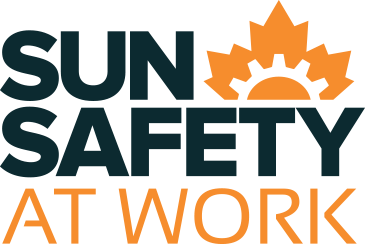Glossary beginning with C
C
- Carcinogen search for term
-
A carcinogen is something that can cause cancer.
- Carcinoma search for term
-
Carcinoma refers to malignant tumours that form from the outer skin (epithelial cells).
- Cataract search for term
-
A cataract is an area of opacity (non-transparency) in the lens of the eye. It may obscure vision. Long-term exposure to high levels of sunlight can cause cataracts.
- Check search for term
-
The check step of the Model Sun Safety Program is the fifth of the six steps. It is based on the Plan-Do-Check-Act model for improvement. In this step the workplace monitors how well the controls and other processes are working and then implements corrective action if needed.
- Chronic search for term
-
Something is chronic that is persistent, prolonged or repeated (as opposed to acute). A chronic exposure is a long-term exposure.
- Comfort zone search for term
-
The temperature range when the majority of individuals feel comfortable.
- Conjunctiva search for term
-
The conjunctiva is a thin membrane that covers the inside of the eyelids and the sclera (white of the eye). It is one element of the eye in which photokeratitis occurs.
- Consultation search for term
-
In many jurisdictions there is a legal requirement for employers to consult with the health & safety committee or health & safety representative when developing, implementing and monitoring a program such a sun safety program. Consultation should be early enough, and substantive enough, that the Committee or Representative can have a significant impact on the program or policy in question. In some jurisdictions, the word participation is used. This is a stronger term for the Committee’s or Representative’s involvement.
- Continual Improvement search for term
-
Continual improvement is the ongoing process for identifying and assessing opportunities for improving the occupational health and safety management system/sun safety program, including reducing the residual risk associated with outdoor work activities. This includes reviewing current control and prevention measures, reviewing the best available technologies and procedures to address residual risk, and implementing a strategy for continual improvement.1.
- 1. CSA Z1000-14 – Occupational health and safety management. CSA Group, 2014.
- Control search for term
-
Controls are “protective or preventive measures that reduce risk”.1 Refer to CCOHS – Hazard Control.
- 1. CSA Z1002-12 – Occupational health and safety – Hazard identification and elimination and risk assessment and control. CSA Group, 2014.
- Control Measures search for term
-
Control measures are controls which are implemented to protect workers. They can also be considered at three points between the source and the worker: (1) the most effective control addresses the hazard at its source (through elimination or substitution); (2) the next most effective level of control is to intervene between the source and the worker (through engineering controls and systems that increase awareness); (3) the least favorable level of control is to implement measures at the point of the worker (administrative controls or personal protection). Also see hierarchy of risk controls.
- Core search for term
-
The Core step of the Model Sun Safety Program is the first of the six steps. It provides a foundation for the sun safety program through its key elements (of policy and communication and consultation) that influence all elements of the program.
- Core temperature search for term
-
Core temperature refers to the core body temperature of a person. It is the ‘operating’ temperature of a person. A significant increase or decrease in core temperature results in health impacts. Heat stress causes an increase in core body temperature. The ‘healthy’ core temperature of a person is within a narrow range around 37oC.
- Cornea search for term
-
The cornea is the transparent outermost layer at the front part of the eye. It is important for focusing vision and strongly absorbs UVC and UVB radiation. It is one element of the eye in which photokeratitis occurs.
- Corrective action search for term
-
Corrective actions are those taken to eliminate the cause or causes of nonconformities in the occupational health and safety management system/sun safety program. These actions try to solve real-life problems with the view of trying to stop the nonconformity occurring again.
- Cramps search for term
-
See heat cramps.
- CSA Z1000-14 search for term
-
Canadian Standard CSA Z 1000-14 Occupational health and safety management provides requirements for an occupational health and safety management system (OHSMS).
- CSA Z1002-12 search for term
-
Canadian Standard CSA Z 1002-12 Occupational health and safety – Hazard identification and elimination and risk assessment and control describes methods that can be used in occupational health and safety to identify hazards, eliminate hazards, and analyze the risk associated with hazards which cannot be eliminated. It also provides guidance on the application of risk control measures. Also see hazard identification, elimination, and risk analysis.
- CSA Z94.3-15 search for term
-
Canadian Standard CSA Z94.3-15 Eye and Face Protectors provides requirements for industrial eye protection (also known as protective eyewear). Eye protection for exposure to bright sun is classified as Class 1A, with the lens to provide radiation protection and with side shields to be fitted and also provide radiation protection.
- CSA Z94.3.1-09 search for term
-
Canadian Standard CSA Z94.3.1-09 Selection, use, and care of protective eyewear provides guidance on the selection, use, and care of eye protection described in CSA Z94.3-15.
- Cutaneous search for term
-
Cutaneous refers to the skin.

